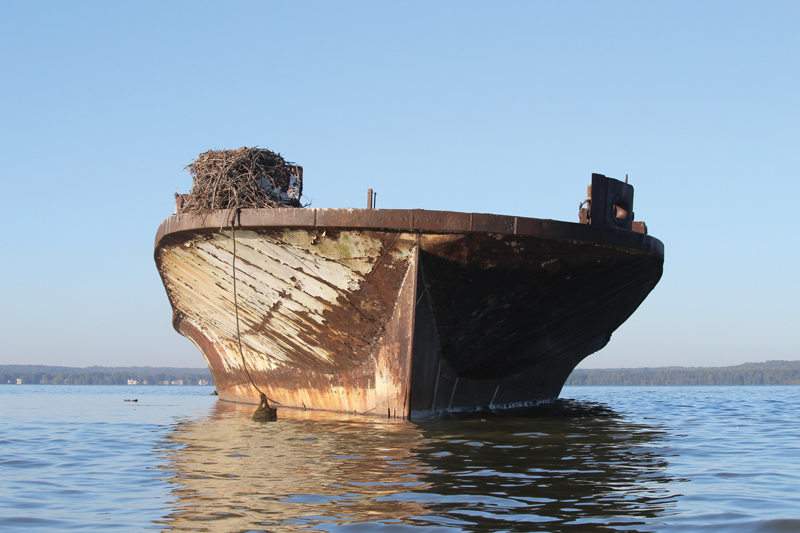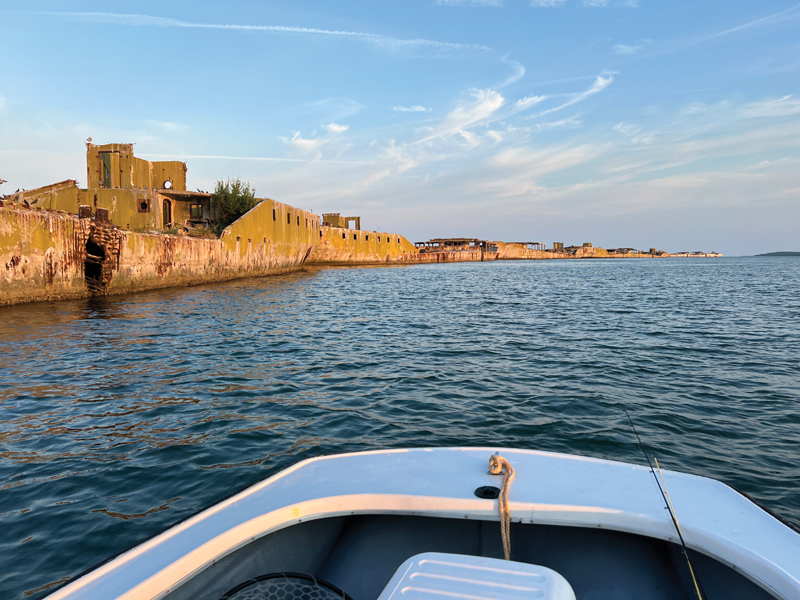Spooky? Not really, but great for exploring
If you’re looking for spooky Chesapeake destinations, two ghost fleets come to mind: Mallows Bay and the Kiptopeke Breakwater. Happy Halloween. Enjoy exploring these and other Chesapeake destinations.

A unique destination on the Potomac River, Mallows Bay is filled with sunken ships that date to a massive shipbuilding effort, which was part of President Woodrow Wilson’s national call to arms against Germany in April 1917. The emergency fleet steamships were hastily constructed at more than 40 shipyards in 17 states. As quickly as that effort began, the ships became obsolete when World War I ended in 1918.
Many of these ships that had launched months earlier suddenly became surplus. They were ferried to a Virginia salvage yard, stripped of metals and other items deemed valuable, and eventually tied together at anchorage in Mallows Bay. Today, the wrecks are largely submerged during high tide, but are revealed to the naked eye during low tide, which is where the term “ghost fleet” originates.
Nature has worked hard to reclaim these vessels that resemble a watery graveyard. Vegetation grows along the tops, creating linear gardens. Bald eagles, great blue herons, and ospreys nest on the boats, and beavers and crabs run amuck in the haft-sunken ships. Mini-ecosystems exist aboard—some with thriving populations of beaver, river otter, and deer.
In 2019 Mallows Bay was designated National Marine Sanctuary. The remains of the more than 100 sunken steamships, as well as Civil War-era shipwrecks, and Native American archaeological sites dating back 12,000 years now enjoy protections offered by the federal government.

Kiptopeke State Park along the lower Eastern Shore of Virginia is most famous for its fleet of concrete “ghost” ships, which were intentionally sunk to make the Kiptopeke Breakwater. Nine concrete ships are lined end to end just west of the former Chesapeake Bay Ferry Terminal and not far from the fishing pier and boat ramp (it’s close enough that you can paddle to the wrecks, though preferably on a calm day).
In 1942, the U.S. Maritime Commission ordered 24 concrete ships to be built due to a steel shortage, as concrete was inexpensive and readily available. After the war ended, nine ships were scuttled off Kiptopeke in 1948 to form a breakwater. All the scuttled ships served as transport and training vessels in the South Pacific and two even saw combat.
Today, the ships make for excellent fishing structure. Other wildlife that may be seen in the area include bottlenose dolphins and brown pelicans. Kiptopeke State Park offers hiking trails, swimming, camping, boating, fishing, and bicycle trails.




